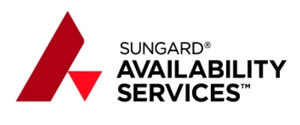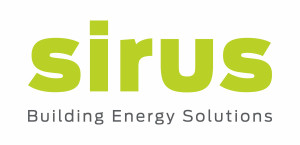Uncategorized
Sustainability
Sustainability for the Pharmaceutical and Life Science Industries (Achieving Eco-balance in Life Sciences)
Achieving sustainability is a major global goal for the pharmaceutical and life science industries. However, development and production of drugs inherently consumes large quantities of natural, human and economic resources.
How to resolve this dilemma?
One strategy for improving the eco-balance in pharmaceutical manufacturing is choosing the right technology.To achieve sustainability in the pharmaceutical and life science industries, you need an innovative approach to business that focuses on: Information, Transparency and Knowledge.
The Technology Factor
Automation and information technology can help you improve your eco-balance considerably. Using our proven, integrated products, systems and solutions combined with our in-depth knowledge of pharmaceutical operations, you can improve your eco-balance in three key areas: Water, Waste and Energy.
The Business Case
Improving the eco-balance in pharma is not only good for your company image, but it also helps you achieve significant improvements in plant and process operations.You will save money from efficient use of resources and processes. Plus, your product quality will improve and become more consistent.
Using our solutions for sustainability in the pharmaceutical and life science industries can make your business more sustainable because you will be able to: protect the environment, increase profitability, create healthier margins and enhance competitiveness.
Water Treatment
Pharmaceutical water treatment requires removing contaminents from municipal drinking water to meet USP standards. There are two basic types of pharmaceutical water; water for topical use or cleaning (sterle purified water, or PW), or water for injection(WFI) which includes sterile water for irrigation and most sterile water for inhalation.
For PW, USP guidelines require a conductivity limit of 0.6–4.7 µS/cm, a total organic carbon or total oxidizable carbon (TOC) limit of 500 ppb (µg/L), and a bacteria-count limit of 100 cfu/mL.
For WFI, the USP guidelines require a conductivity limit of 0.6–4.7 µS/cm, a TOC limit of 500 ppb (µg/L), an endotoxin limit of 0.25 endotoxin units/mL and a bacteria-count limit of 10 cfu/100 mL.
The main difference between PW and WFI is the amount of bacterial contamination allowed, measured by colony count and by endotoxin level.
Every water treatment plant is unique, but may include a combination of these methods:
- Multimedia filtration: Multimedia filters are designed to remove the bulk of suspended contaminants whose size exceeds 10–30 µm.
- Activated carbon (AC): AC beds, also known as activated carbon filters, most commonly are used to remove chlorine and chloramine compounds from feed water. This filtration process protects downstream equipment such as RO membranes and IX resin beads from the damaging oxidizing action of chlorine and chloramine compounds.
- Ion Exchange (IX) units: IX technology exchanges undesirable feed water cations and anions with desirable cations and anions. Cations are positively charged atoms and molecules. Anions are negatively charged atoms and molecules. Cation IX units exchange undesirable feed water cations such as calcium, magnesium, lead, and copper with desirable hydrogen ions. Anion IX units exchange undesirable feed water anions such as chloride, sulfate, phosphate, and nitrate with desirable hydroxide ions. The resulting hydrogen and hydroxide ions then combine to form water.
- Distillation: Distillation units heat the feed water to its boiling point. Most dissolved and suspended contaminants remain in the water phase. The steam that is produced is condensed and typically meets WFI and PW standards.
- Reverse Osmosis (RO) water treatment: RO water treatment has become the standard at many pharmaceutical water treatment plants. RO technology can be a costeffective replacement for dual cation and anion IX units. RO systems reduce the need to use costly chemicals, especially those that are caustic, and they curtail the ever-increasing cost of regeneration waste disposal. The payback that results from using an RO system can be achieved in less than two years in some situations. An RO membrane system can remove as much as 98–99% or more of all dissolved contaminants and can remove essentially all suspended (particulate) contaminants. However, RO units require pretreatment to prevent scaling, fouling with living and nonliving particulate materials, and chemical attack, commonly by oxidizing agents.
- Softening: A softener is a type of IX technology that controls scaling in downstream equipment. A softener controls scaling by removing hard scale–forming cations such as calcium and magnesium and exchanging (i.e., replacing) these ions for nonscale- forming sodium ions. An older term, sodium zeolite softening, frequently is used to describe water softening.
- Cartridge filtration: Cartridge filtration or other prefiltration technology is used ahead of RO units to protect against fouling from suspended particles in the feed water. RO membrane systems may become fouled if sufficient suspended solids (particulate) removal is not accomplished. Typically, 1–5-µm nominally rated filter cartridges are used.
- Mixed-bed IX units usually are positioned after an RO subsystem. The effluent from a mixed-bed IX unit meets USP conductivity limits for PW and WFI.
- UV irradiation may be used for bacterial control.
- Electrodeionization (EDI): EDI units in many cases can cost-effectively replace mixed-bed IX units. The resin beads in EDI units do not require chemical regeneration by acid and caustic. EDI units are continuously regenerated electrically.
Driven by sustainability
Ireland is one of the leading locations for the pharmaceutical industry in Europe. The pharmaceutical industry in Ireland comprises a mix of international and local companies. One hundred and twenty overseas companies have plants in Ireland including 14 of the 15 largest pharmaceutical companies in the world.
The pharmaceutical industry is relatively new to the Irish economy. Most of the companies operating in this area have had a presence in Ireland since the 1960s. Originally the industry was largely involved in producing active ingredients in bulk for export to other countries to be processed into finished products Subsequently, plants were set up to produce the finished products here. In recent years a number of companies have also set up research centres and have become involved in joint research projects with Irish universities.
The pharmaceutical industry in Ireland is highly advanced, incorporating the latest technology, state of the art equipment and strict quality control procedures. Ireland’s pharmaceutical industry offers a wide range of products and services, from research and development for new medicines to the manufacturing and marketing of new medicines for humans and animals.




